Alexander McQueen's Iconic Designs in Costume Institute Retrospective at Metropolitan Museum
Creations by the late British designer Alexander McQueen are displayed during a preview at the Metropolitan Museum of Art in New York, May 2, 2011. An exhibition of McQueen's creations titled Savage Beauty will be on display at the museum from May 4-July 31, 2011. REUTERS/Finbarr O'Reilly
The spring 2011 Costume Institute exhibition at The Metropolitan Museum of Art, Alexander McQueen: Savage Beauty, is on view May 4 through July 31. The exhibition celebrates the late Mr. McQueen's extraordinary contributions to fashion. From his Central Saint Martins postgraduate collection in 1992 to his final runway presentation, which took place after his death in February 2010, Mr. McQueen challenged and expanded our understanding of fashion beyond utility to a conceptual expression of culture, politics, and identity.
The exhibition is made possible by Alexander McQueen. .
"Alexander McQueen's iconic designs constitute the work of an artist whose medium of expression was fashion," said Thomas P. Campbell, Director of The Metropolitan Museum of Art. "This landmark exhibition continues the Museum's tradition of celebrating designers who changed the course of history and culture by creating new possibilities."
To celebrate the opening of the exhibition, the Museum's Costume Institute Benefit takes place on Monday, May 2, 2011. The evening's Honorary Chairs are François-Henri Pinault and Salma Hayek, and the Co-Chairs are Colin Firth, Stella McCartney, and Anna Wintour, Editor-in-Chief of Vogue. This fundraising event is The Costume Institute's main source of annual funding for exhibitions, acquisitions, and capital improvements.
"Alexander McQueen was best known for his astonishing and extravagant runway presentations, which were given dramatic scenarios and narrative structures that suggested avant-garde installation and performance art," said Andrew Bolton, Curator, The Costume Institute. "His fashions were an outlet for his emotions, an expression of the deepest, often darkest, aspects of his imagination. He was a true romantic in the Byronic sense of the word – he channeled the sublime."
ExhThe exhibition, in the Metropolitan Museum's second-floor Cantor Galleries, features approximately 100 ensembles and 70 accessories from Mr. McQueen's prolific 19-year career. Drawn primarily from the Alexander McQueen Archive in London, with some pieces from the Givenchy Archive in Paris as well as private collections, signature designs including the bumster trouser, the kimono jacket, and the three-point "origami" frock coat are on view. McQueen's fashions often referenced the exaggerated silhouettes of the 1860s, 1880s, 1890s, and 1950s, but his technical ingenuity always imbued his designs with an innovative sensibility that kept him at the vanguard.
Galleries showcase recurring themes and concepts in McQueen's work. "The Romantic Mind" examines his technical ingenuity, which combined the precision of tailoring and patternmaking with the spontaneity of draping and dressmaking. "Romantic Gothic" highlights McQueen's historicism, particularly his engagement with the Victorian Gothic, and dichotomies such as life and death. "Romantic Nationalism" looks at McQueen's patriotic impulses, including his reflections on his Scottish heritage and his fascination with British history. "Romantic Exoticism" explores the influence of other cultures on the designer's imagination, especially China and Japan. "Romantic Primitivism" captures McQueen's engagement with the ideal of the "noble savage," while "Romantic Naturalism" considers his enduring interest in raw materials and forms from nature.
Six McQueen collections that explore his engagement with the Romantic sublime and the dialectics of beauty and horror are featured as groupings in the galleries – Highland Rape (autumn/winter 1995-96), Number 13 (spring/ summer 1999), VOSS (spring/summer 2001), Irere (spring/summer 2003), Plato's Atlantis (spring/summer 2010), and Angels and Demons (autumn/winter 2010-11). "Cabinet of Curiosities" includes various atavistic and fetishized accessories produced in collaboration with the milliners Dai Rees and Philip Treacy, and the jewelers Shaun Leane, Erik Halley, and Sarah Harmarnee. The Cabinet also displays video highlights from ten of McQueen's renowned runway presentations, including Joan (autumn/winter 1998–99), What a Merry-Go-Round (autumn/winter 2001–02), and They Shoot Horses Don't They? (spring/summer 2004).
The Romantic Mind
Exhibition renderings by Joseph Bennett
“You’ve got to know the rules to break them. That’s what I’m here for, to demolish the rules but to keep the tradition.” Alexander McQueen
Alexander McQueen (British, 1969–2010), Coat Jack the Ripper Stalks His Victims (MA Graduation Collection), 1992. Pink silk satin printed in thorn pattern lined in white silk with encapsulated human hair. From the collection of Isabella Blow courtesy of the Hon. Daphne Guinness. Photography by Sølve Sundsbø
Alexander McQueen (British, 1969–2010). “Bumster” Skirt Highland Rape, autumn/winter 1995–96 (re-edition from original pattern). Black silk taffeta. Courtesy of Alexander McQueen. Photography by Sølve Sundsbø
Alexander McQueen (British, 1969–2010). Dress Plato’s Atlantis, spring/summer 2010. Gray wool and silk/synthetic knit printed in jellyfish pattern. Courtesy of Alexander McQueen. Photography by Sølve Sundsbø
Alexander McQueen (British, 1969–2010). Jacket Joan, autumn/winter 1998–99. Black cashmere. Courtesy of Janet Fischgrund. Photography by Sølve Sundsbø
Alexander McQueen (British, 1969–2010). Jacket It’s a Jungle Out There, autumn/winter 1997–98. Silk/cotton twill printed in Hieronymus Bosch pattern. Courtesy of Alexander McQueen. Photography by Sølve Sundsbø
Alexander McQueen (British, 1969–2010). Coat Dante, autumn/winter 1996–97. Black wool felt embroidered with gold bullion cord. From the collection of Isabella Blow courtesy of the Hon. Daphne Guinness. Photography by Sølve Sundsbø
Romantic Gothic and Cabinet of Curiosities
“People find my things sometimes aggressive. But I don’t see it as aggressive. I see it as romantic, dealing with a dark side of personality.” Alexander McQueen
Alexander McQueen (British, 1969–2010). Ensemble Supercalifragilisticexpialidocious, autumn/winter 2002–3. Coat of black parachute silk; trouser of black synthetic; hat of black silk satin. Hat by Philip Treacy for Alexander McQueen courtesy of Alister Mackie. Courtesy of Alexander McQueen. Photography by Sølve Sundsbø
Alexander McQueen (British, 1969–2010). Ensemble. Autumn/winter 2010–11. Dress and glove of printed silk satin; underskirt of duck feathers painted gold. Courtesy of Alexander McQueen. Photography by Sølve Sundsbø
Alexander McQueen (British, 1969–2010). Dress The Horn of Plenty, autumn/winter 2009–10. Black duck feathers. Courtesy of Alexander McQueen.. Photography by Sølve Sundsbø
Shaun Leane for Alexander McQueen. “Spine” Corset Untitled, spring/summer 1998. Aluminum and black leather. Courtesy of Shaun Leane. Photography by Sølve Sundsbø
Shaun Leane for Alexander McQueen. “Coiled” Corset The Overlook, autumn/winter 1999–2000. Aluminum. Courtesy of Shaun Leane. Photography by Sølve Sundsbø
Alexander McQueen (British, 1969–2010). Ensemble The Hunger, spring/summer 1996. Silver wool/synthetic with red silk faille lining; bodice of molded plastic encasing worms; skirt of red silk faille with silver antlers. Antlers by Shaun Leane for Alexander McQueen. Courtesy of Alexander McQueen. Photography by Sølve Sundsbø
Alexander McQueen (British, 1969–2010). Dress It’s Only a Game, spring/summer 2005. Lilac leather and horsehair. Courtesy of Alexander McQueen. Photography by Sølve Sundsbø
Alexander McQueen (British, 1969–2010). Ensemble No. 13, spring/summer 1999. Corset of brown leather; skirt of cream silk lace; prosthetic legs of carved elm wood. Courtesy of Alexander McQueen. Photography by Sølve Sundsbø
Alexander McQueen (British, 1969–2010). Dress No. 13, spring/summer 1999. White cotton muslin spray-painted black and yellow with underskirt of white synthetic tulle. Courtesy of Alexander McQueen. Photography by Sølve Sundsbø
Nationalism
Exhibition renderings by Joseph Bennett
“The reason I’m patriotic about Scotland is because I think it’s been dealt a really hard hand. It’s marketed the world over as . . . haggis . . . bagpipes. But no one ever puts anything back into it.” Alexander McQueen
Alexander McQueen (British, 1969–2010). Dress Highland Rape, autumn/winter 1995–96. Green and bronze cotton/synthetic lace. Courtesy of Alexander McQueen. Photography by Sølve Sundsbø
Alexander McQueen (British, 1969–2010). Suit Highland Rape, autumn/winter 1995–96 (jacket and skirt not worn together on the runway). Jacket of McQueen wool tartan with green wool felt sleeves; skirt of McQueen wool tartan. From the collection of Isabella Blow courtesy of the Hon. Daphne Guinness. Photography by Sølve Sundsbø
Alexander McQueen (British, 1969–2010). Ensemble Widows of Culloden, autumn/winter 2006–7. Dress of McQueen wool tartan; top of nude silk net appliquéd with black lace; underskirt of cream silk tulle. Courtesy of Alexander McQueen. Photography by Sølve Sundsbø
Alexander McQueen (British, 1969–2010). Dress Widows of Culloden, autumn/winter 2006–7.. McQueen wool tartan appliquéd with black cotton lace; underskirt of black synthetic tulle; faux jabot of black cotton with broderie anglaise. Courtesy of Alexander McQueen. Photography by Sølve Sundsbø
Alexander McQueen (British, 1969–2010). Ensemble The Girl Who Lived in the Tree, autumn/winter 2008–9. Jacket of red silk velvet embroidered with gold bullion and trimmed with white shearling; dress of ivory silk tulle. Courtesy of Alexander McQueen. Photography by Sølve Sundsbø
Alexander McQueen (British, 1969–2010). Ensemble The Girl Who Lived in the Tree, autumn/winter 2008–9. Coat of red silk satin; dress of ivory silk chiffon embroidered with crystal beads. Courtesy of Alexander McQueen. Photography by Sølve Sundsbø
Romantic Exoticism
Exhibition renderings by Joseph Bennett
“I want to be honest about the world that we live in, and sometimes my political persuasions come through in my work. Fashion can be really racist, looking at the clothes of other cultures as costumes. . . . That’s mundane and it’s old hat. Let’s break down some barriers.” Alexander McQueen
Alexander McQueen (British, 1969–2010). Ensemble It’s Only a Game, spring/summer 2005. Dress and obi-style sash of lilac and silver brocade; jacket of lilac silk faille embroidered with silk thread; top of nude synthetic net embroidered with silk thread. Dress courtesy of Alexander McQueen. Photography by Sølve Sundsbø
Alexander McQueen (British, 1969–2010)? Ensemble VOSS, spring/summer 2001. Jacket of pink and gray wool bird’s-eye embroidered with silk thread; trouser of pink and gray wool bird’s-eye; hat of pink and gray wool bird’s-eye embroidered with silk thread and decorated with Amaranthus. Courtesy of Alexander McQueen. Photography by Sølve Sundsbø
Alexander McQueen (British, 1969–2010). Ensemble VOSS, spring/summer 2001. Overdress of panels from a nineteenth-century Japanese silk screen; underdress of oyster shells; neckpiece of silver and Tahiti pearls. Neckpiece by Shaun Leane for Alexander McQueen courtesy of Perles de Tahiti. Dress courtesy of Alexander McQueen. Photography by Sølve Sundsbø
Alexander McQueen (British, 1969–2010)? Dress VOSS, spring/summer 2001. Nude synthetic net appliquéd with roundels in the shape of chrysanthemums embroidered with red, gold, and black silk thread with black ostrich feathers. Courtesy of Alexander McQueen. Photography by Sølve Sundsbø
Romantic Primitivism
Exhibition renderings by Joseph Bennett
“I try to push the silhouette. To change the silhouette is to change the thinking of how we look. What I do is look at ancient African tribes, and the way they dress. The rituals of how they dress. . . . There’s a lot of tribalism in the collections.” Alexander McQueen
Alexander McQueen (British, 1969–2010). Coat Eshu, autumn/winter 2000–2001. Black synthetic hair. Courtesy of Alexander McQueen. Photography by Sølve Sundsbø
Alexander McQueen (British, 1969–2010). Dress Eshu, autumn/winter 2000–2001; Yellow glass beads and brown horsehair. Courtesy of Alexander McQueen; Photography by Sølve Sundsbø
Alexander McQueen (British, 1969–2010). Ensemble Eshu, autumn/winter 2000–2001. Dress of beige leather; crinoline of metal wire. Courtesy of Alexander McQueen. Photography by Sølve Sundsbø
Alexander McQueen (British, 1969–2010). Bodysuit t’s a Jungle Out There, autumn/winter 1997–98. Brown leather with bleached denim and taxidermy crocodile heads. Courtesy of Alexander McQueen. Photography by Sølve Sundsbø
Alexander McQueen (British, 1969–2010); Ensemble It’s a Jungle Out There, autumn/winter 1997–98.Jacket of brown pony skin with impala horns; trousers of bleached denim.Courtesy of Alexander McQueen. otography by Sølve Sundsbø
Alexander McQueen (British, 1969–2010); “Oyster” Dress Irere, spring/summer 2003.Ivory silk organza, georgette, and chiffon.Courtesy of Alexander McQueen.Photography by Sølve Sundsbø
Romantic Naturalism
Exhibition renderings by Joseph Bennett
“I have always loved the mechanics of nature and to a greater or lesser extent my work is always informed by that.” Alexander McQueen
Alexander McQueen (British, 1969–2010). Dress Plato’s Atlantis, spring/summer 2010. Silk jacquard in a snake pattern embroidered with yellow enamel paillettes in a honeycomb pattern. Courtesy of Alexander McQueen. Photography by Sølve Sundsbø
Alexander McQueen (British, 1969–2010). “Jellyfish” Ensemble Plato’s Atlantis, spring/summer 2010. Dress, leggings, and “Armadillo” boots embroidered with iridescent enamel paillettes. Courtesy of Alexander McQueen. Photography by Sølve Sundsbø
Alexander McQueen (British, 1969–2010. Dress. Widows of Culloden, autumn/winter 2006–7. Pheasant feathers. Courtesy of Alexander McQueen. Photography by Sølve Sundsbø
Alexander McQueen (British, 1969–2010). Dress Sarabande, spring/summer 2007. Nude silk organza embroidered with silk flowers and fresh flowers. Courtesy of Alexander McQueen. Photography by Sølve Sundsbø
Other Selected Objects
Alexander McQueen (British, 1969–2010). Dress VOSS, spring/summer 2001. Red and black ostrich feathers and glass medical slides painted red. Courtesy of Alexander McQueen. Photography by Sølve Sundsbø
“There’s blood beneath every layer of skin.” Alexander McQueen, The Observer Magazine, October 7, 2001
Alexander McQueen (British, 1969–2010). Dress VOSS, spring/summer 2001. Razor-clam shells stripped and varnished. Courtesy of Alexander McQueen. Photography by Sølve Sundsbø
“My friend George and I were walking on the beach in Norfolk, and there were thousands of [razor-clam] shells. They were so beautiful, I thought I had to do something with them. So, we decided to make [a dress] out of them. . . . The shells had outlived their usefulness on the beach, so we put them to another use on a dress. Then Erin [O’Conner] came out and trashed the dress, so their usefulness was over once again. Kind of like fashion, really.” Alexander McQueen , WWD, September 28, 2000
House of Givenchy Haute Couture. Ensemble Eclect Dissect, autumn/winter 1997–98. Dress of black leather; collar of red pheasant feathers and resin vulture skulls; gloves of black leather. Courtesy of Givenchy Haute Couture. Photography by Sølve Sundsbø
“[In this collection] my idea was this mad scientist who cut all these women up and mixed them all back together.”. Alexander McQueen , Numéro, July/August 2002
“I don’t think like the average person on the street. I think quite perversely sometimes.”. Alexander McQueen, Dazed and Confused, September 1998
Alexander McQueen (British, 1969–2010). Corset Dante, autumn/winter 1996–97. Lilac silk faille appliquéd with black silk lace and embroidered with jet beads. Courtesy of Alexander McQueen. Photography by Sølve Sundsbø
“People find my things sometimes aggressive. But I don’t see it as aggressive. I see it as romantic, dealing with a dark side of personality.”. Alexander McQueen, W, July 2002
Alexander McQueen (British, 1969–2010). Ensemble It’s Only a Game, spring/summer 2005. Bodysuit and obi-style sash of lilac silk satin and chiffon embroidered with silk thread; shoulder pads and helmet of fiberglass painted with acrylics. Courtesy of Alexander McQueen. Photography by Sølve Sundsbø
“[In this collection] the idea of the chess game meant that we looked at six different types of women, women on opposing sides. We had the Americans facing the Japanese and the redheads facing the tanned Latinos.” Alexander McQueen, Another Magazine, Spring/Summer 2005
Alexander McQueen (British, 1969–2010). Dress Sarabande, spring/summer 2007. Cream silk satin and organza appliquéd with black degrade silk lace and embroidered in clear beads and sequins. Courtesy of Alexander McQueen. Photography by Sølve Sundsbø
“I liked the padded hips because they didn’t make the [piece] look historical, but . . . more sensual. Like the statue of Diana with breasts and big hips. It’s more maternal, more womanly.” Alexander McQueen, Purple Fashion, Issue 7, Summer 2007
Alexander McQueen (British, 1969–2010). Dress Widows of Culloden, autumn/winter 2006–7. Cream silk tulle and lace with resin antlers. Courtesy of Alexander McQueen. Photography by Sølve Sundsbø
“When we put the antlers on the model and then draped over it the lace embroidery that we had made, we had to poke them through a £2,000 piece of work. But then it worked because it looks like she’s rammed the piece of lace with her antlers. There’s always spontaneity. You’ve got to allow for that in my shows.” Alexander McQueen, Big, Autumn/Winter 2006
May 4—July 31, 2011.

/https%3A%2F%2Fprofilepics.canalblog.com%2Fprofilepics%2F1%2F0%2F100183.jpg)
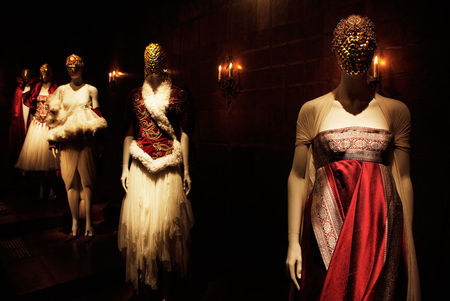



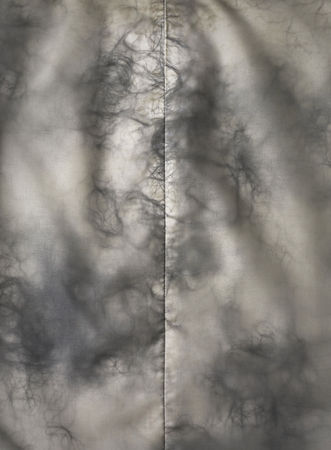









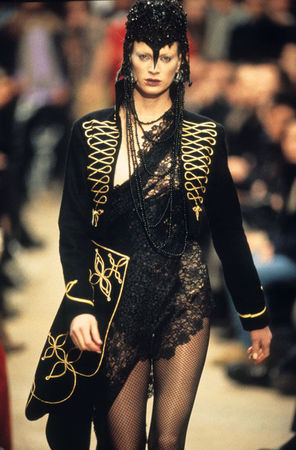
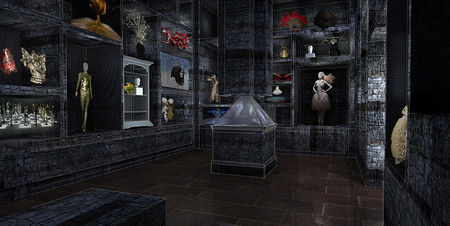



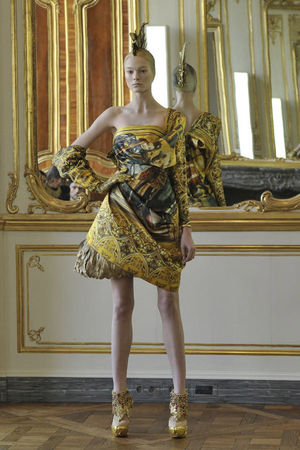



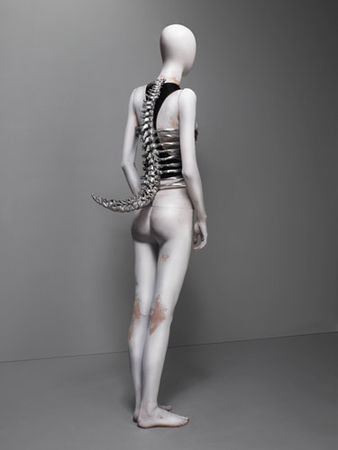
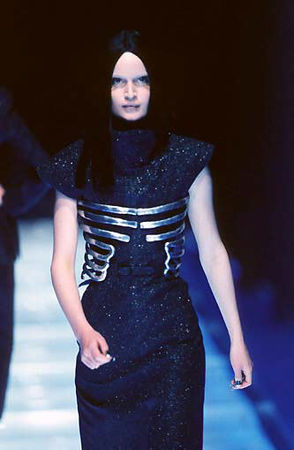




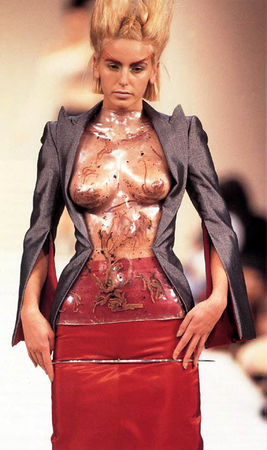
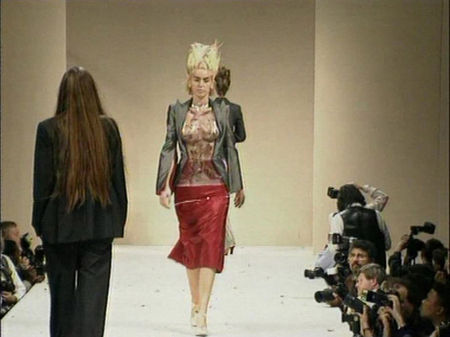


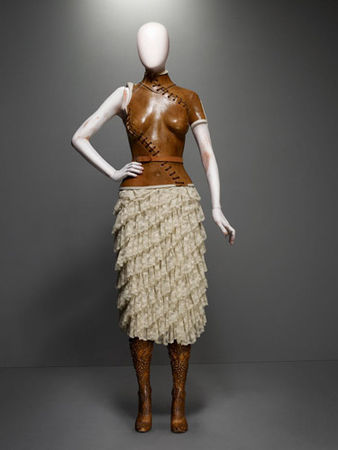

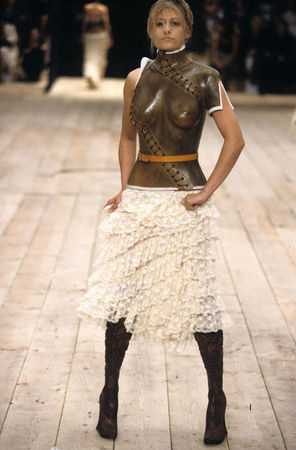

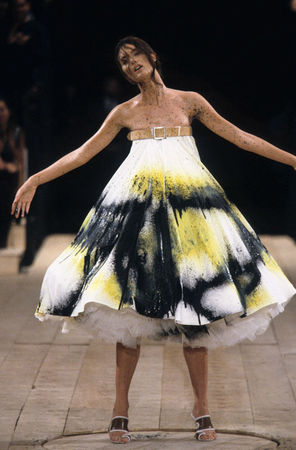
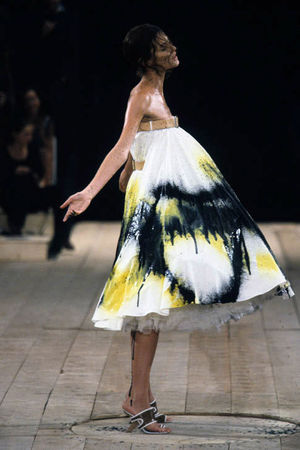


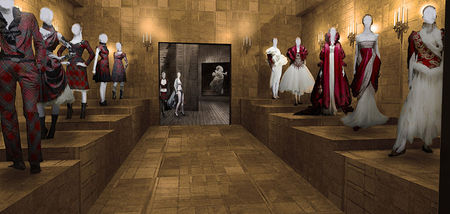
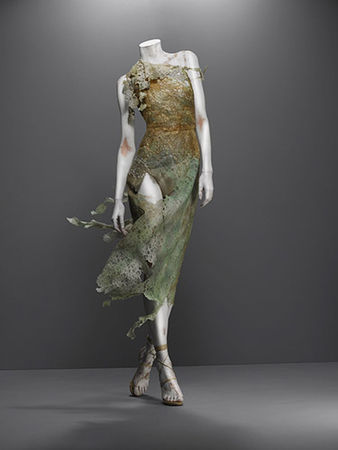
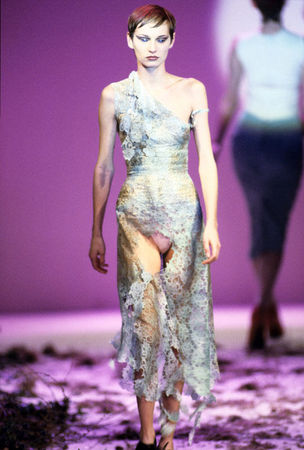


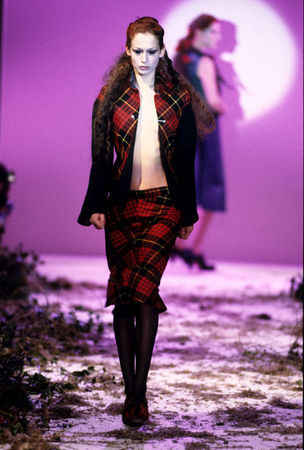




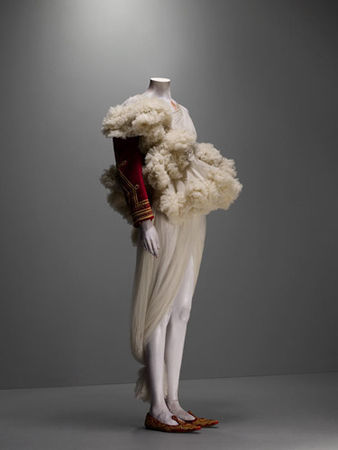



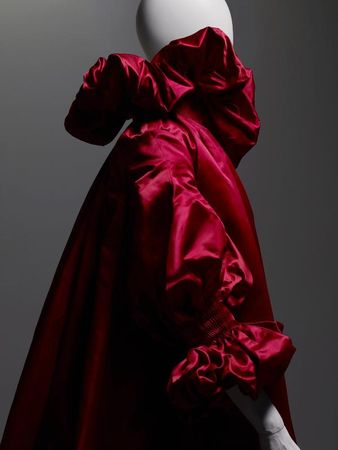



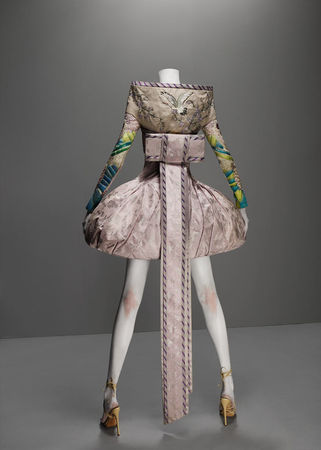
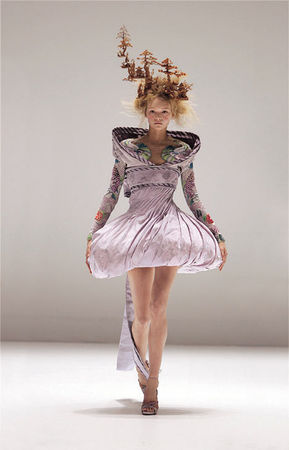






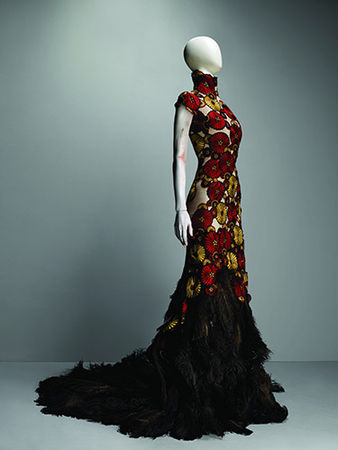

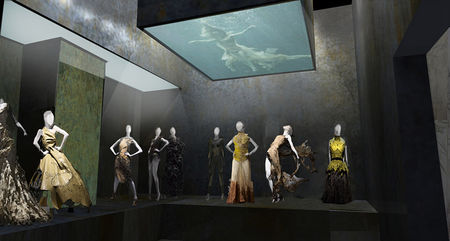
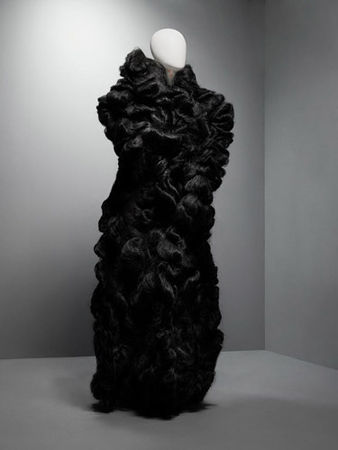
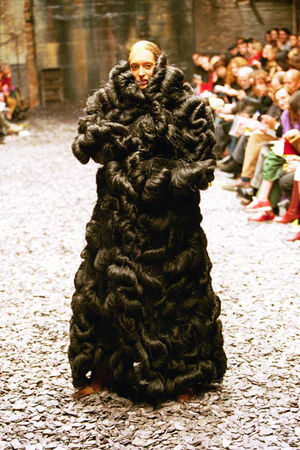

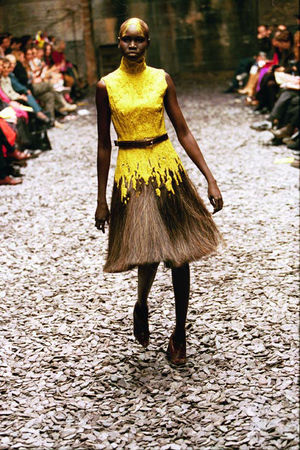






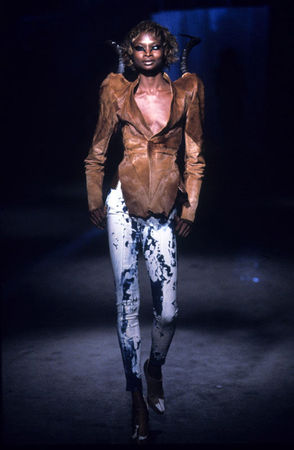
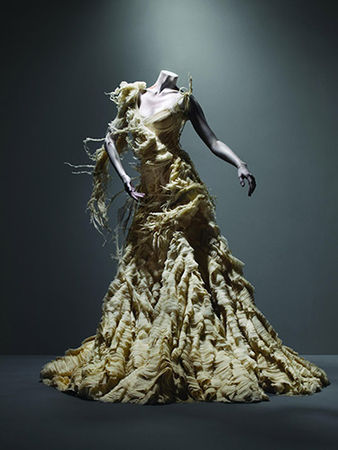


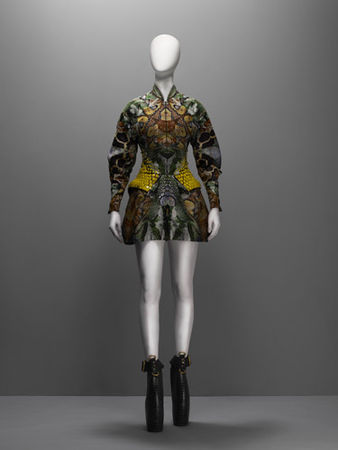
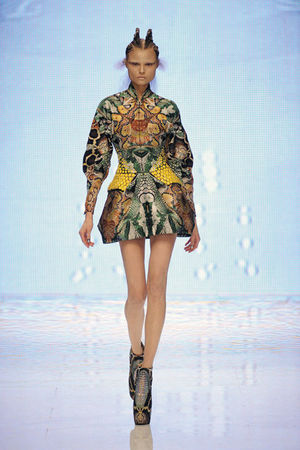
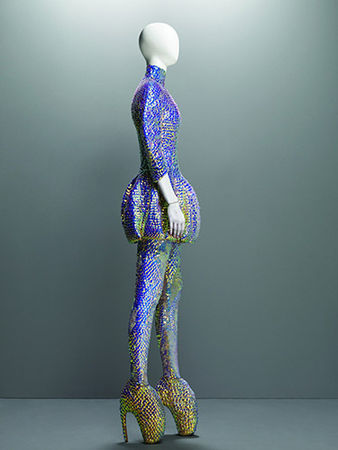



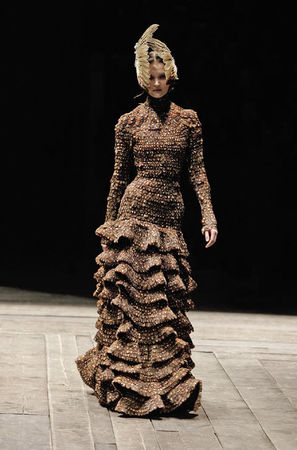
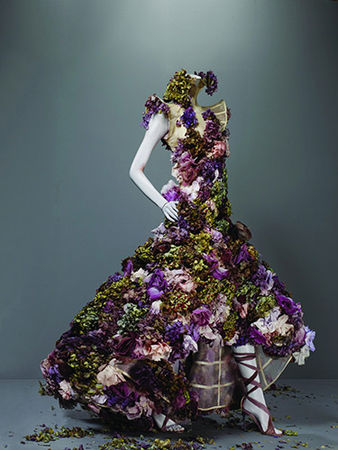
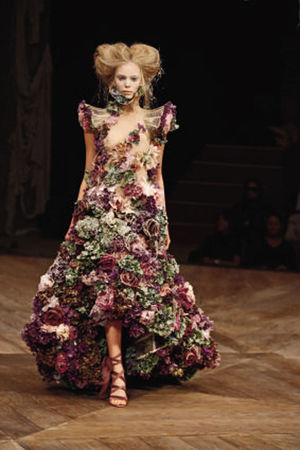


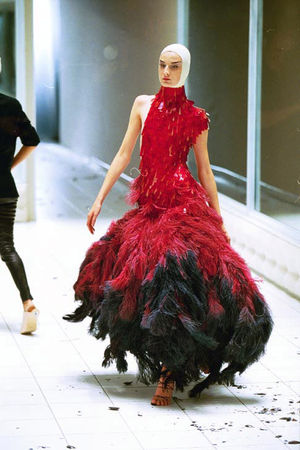
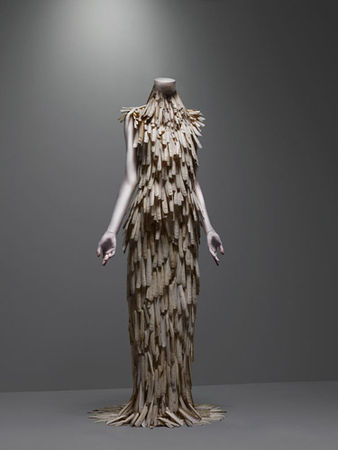
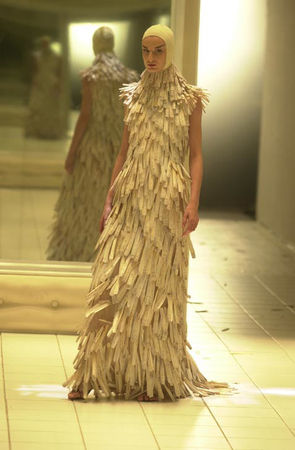
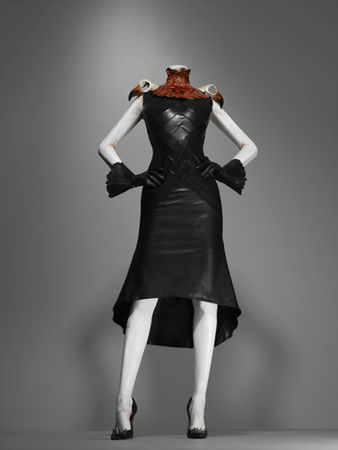


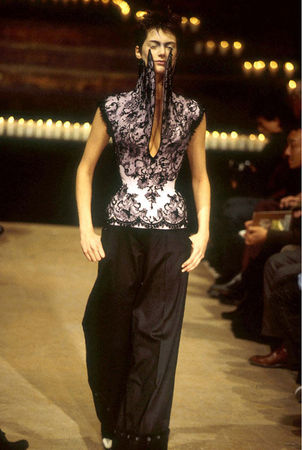
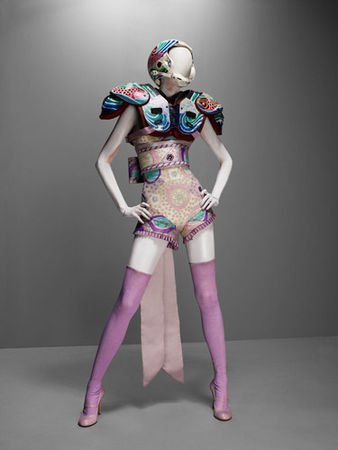


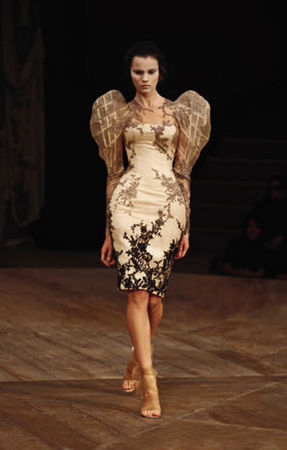


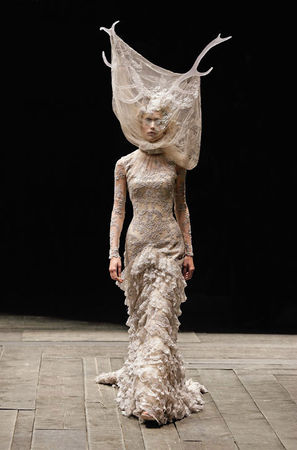


/http%3A%2F%2Fstorage.canalblog.com%2F49%2F69%2F119589%2F62499172_p.jpg)
/http%3A%2F%2Fstorage.canalblog.com%2F55%2F38%2F119589%2F58872212_p.jpg)
/http%3A%2F%2Fstorage.canalblog.com%2F84%2F23%2F577050%2F54928202_o.jpg)
/http%3A%2F%2Fstorage.canalblog.com%2F34%2F57%2F577050%2F54927299_o.jpg)